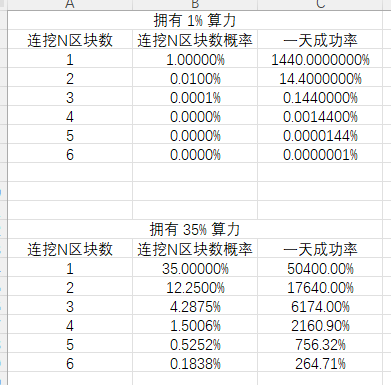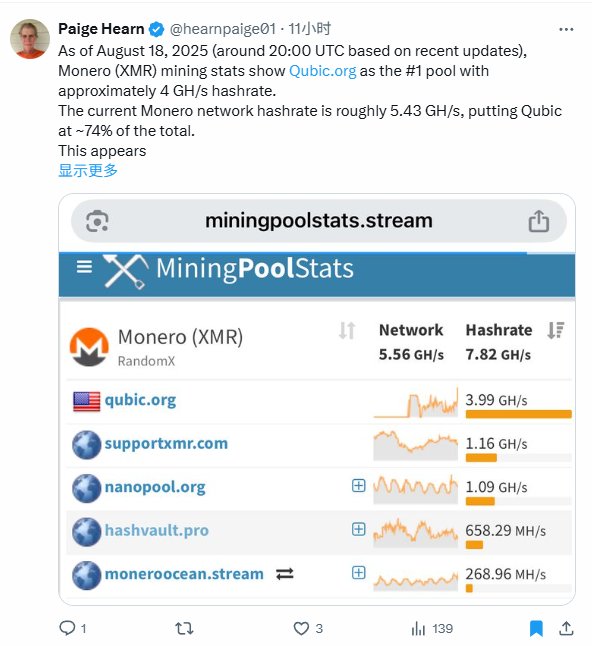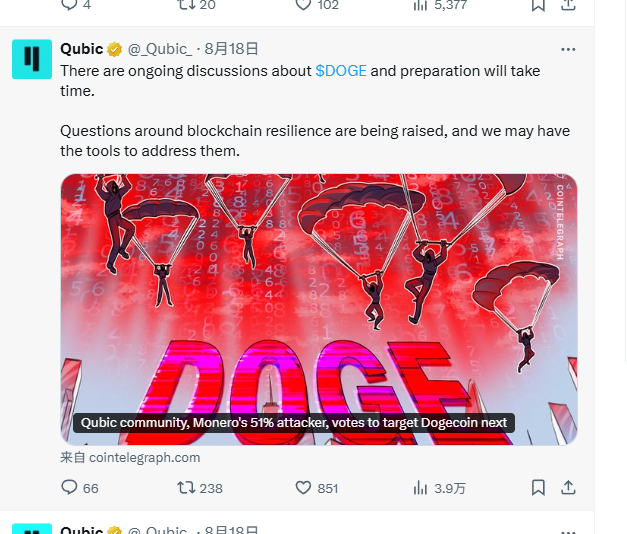Some follow-up: Exciting, this is psychological warfare. Since last week when $XMR was officially announced by Qubic to have undergone a 51% attack, the community has drawn several conclusions in hindsight:
Qubic did not actually possess 51% of the hash power during the so-called 51% attack last week; it only temporarily reached around 35%.
Qubic mined 6 XMR blocks in a row, suspected to be selfish mining.
Selfish mining refers to the practice of mining blocks but withholding them from being published, waiting until six blocks are accumulated to release them all at once, thus creating the longest chain. This causes the honest miners' 5 blocks (the second longest chain) to become invalid, enabling a double spend.
PS: I roughly sketched a diagram to illustrate.
In fact, even if I only have 1% of the hash power, theoretically, I could still mine 6 blocks in a row, although the probability is very low, while 35% hash power has a much higher probability.
I did a simple calculation. This is just natural probability; with Monero producing 1440 blocks a day, a 35% hash power mathematically expects to successfully attack 2.6 times a day.
This does not even account for the bonus from selfish mining, which would make it even higher; otherwise, Qubic might not be willing to spend money to temporarily rent hash power to impact 6 blocks.
Why is this model called selfish? Because when withholding blocks, to ensure the success rate, they often do not include transactions, resulting in many empty blocks, wasting block space.
Back to the main point, and Qubic did not perform a double spend; many exchanges require 10 block confirmations for XMR deposits, so they had no real incentive to attack.
So you can understand that Qubic neither had 51% hash power nor conducted a 51% attack; they merely showcased a bit of muscle and then issued a press release claiming to have completed a 51% attack.
But why is it called psychological warfare? Because once the event occurred, many miners surprisingly surrendered and really joined the Qubic pool, leading to Qubic's hash power actually exceeding 50% as of yesterday.
So this is not a hash power battle, but a psychological battle.
This is a form of deterrence against miners—if you do not join the Qubic pool, the blocks you mine in the future may become invalid, affecting your yield; if you join, although it means aiding the oppressor, not only will you incur losses, but even miners who double mine are not all hard-headed; many still need to consider the economic implications.
Immediately after, they announced their next target would be Dogecoin. However, I believe that Dogecoin is based on Litecoin mining machines, which have ASICs, so it may not be that simple, but they are experts in psychological warfare. Therefore, this announcement itself may be a new form of psychological warfare.
Breathtaking, this is called "Fake it till you make it," which is hard to translate; literally, it means: "Pretend to blow it up until it turns into something real."
免责声明:本文章仅代表作者个人观点,不代表本平台的立场和观点。本文章仅供信息分享,不构成对任何人的任何投资建议。用户与作者之间的任何争议,与本平台无关。如网页中刊载的文章或图片涉及侵权,请提供相关的权利证明和身份证明发送邮件到support@aicoin.com,本平台相关工作人员将会进行核查。








